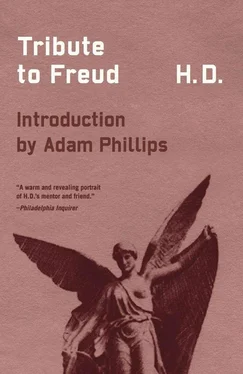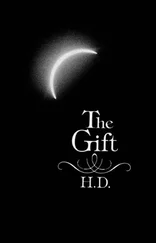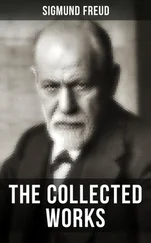And there I sat and there is my friend Bryher who has brought me to Greece. I can turn now to her, though I do not budge an inch or break the sustained crystal-gazing stare at the wall before me. I say to Bryher, “There have been pictures here — I thought they were shadows at first, but they are light, not shadow. They are quite simple objects — but of course it’s very strange. I can break away from them now, if I want — it’s just a matter of concentrating — what do you think? Shall I stop? Shall I go on?” Bryher says without hesitation, “Go on.”
While I was speaking to Bryher, there is a sort of pictorial buzzing — I mean, about the base of the tripod, there are small creatures, but these are in black; they move about, in and around the base of the tripod, but they are very small; they are like ants swarming, or very small half-winged insects that have not yet learnt to fly. Fly? They are flies, it seems — but no, they are tiny people, all in black or outlined as in, or with, shadow, in distinction to the figures of the three “cards” already described. They are not a symbol of themselves, they are simply a sort of dust, a cloud or a swarm of small midges that move back and forth, but on one level, as if walking rather than flying. Even as I consider this new aspect of the writing, I am bothered, annoyed — just as one is when suddenly in a country lane one is beset in the evening light by a sudden swarm of midges. They are not important but it would be a calamity if one of them got stuck in one’s eye. There was that sort of feeling; people, people — did they annoy me so? Would they perhaps eventually cloud my vision or, worse still, would one of them get “stuck in my eye”? They were people, they were annoying — I did not hate people, I did not especially resent any one person. I had known such extraordinarily gifted and charming people. They had made much of me or they had slighted me and yet neither praise nor neglect mattered in the face of the gravest issues — life, death. (I had had my child, I was alive.) And yet, so oddly, I knew that this experience, this writing-on-the-wall before me, could not be shared with them — could not be shared with anyone except the girl who stood so bravely there beside me. This girl had said without hesitation, “Go on.” It was she really who had the detachment and the integrity of the Pythoness of Delphi. But it was I, battered and disassociated from my American family and my English friends, who was seeing the pictures, who was reading the writing or who was granted the inner vision. Or perhaps in some sense, we were “seeing” it together, for without her, admittedly, I could not have gone on.
Yet, although now assured of her support, my own head is splitting with the ache of concentration. I know that if I let go, lessen the intensity of my stare and shut my eyes or even blink my eyes, to rest them, the pictures will fade out. My curiosity is insatiable. This has never happened to me before, it may never happen again. I am not actually analyzing this as I watch the pictures, but it seems now possible that the mechanism of their projection (from within or from without) had something to do with, or in some way was related to, my feelings for the shrine at Delphi. Actually, we had intended stopping off at Itea; we had come from Athens, by boat through the Corinthian canal and up the Gulf of Corinth. Delphi and the shrine of Helios (Hellas, Helen) had been really the main objective of my journey. Athens came a very close second in affection; however, having left Athens, we were informed when the boat stopped at Itea that it was absolutely impossible for two ladies alone, at that time, to make the then dangerous trip on the winding road to Delphi, that in imagination I saw so clearly tucked away under Parnassus. Bryher and I were forced to content ourselves with a somewhat longer stay than was first planned in the beautiful island of Corfu.
But the idea of Delphi had always touched me very deeply and Bryher and I, back in that winter London of the previous spring — it was a winter London that spring — had talked of the famous sacred way. She herself had visited these places with her father before the 1914 war and I had once said to her, while convalescing from the 1919 illness, “If I could only feel that I could walk the sacred way to Delphi, I know I would get well.” But no, now that we were so near, we could not go to Delphi. We were going in another direction, Brindisi, Rome, Paris, London. Already our half-packed bags, typewriter, books lay strewn about; we obviously were leaving. And we were not leaving Corfu in order to return to Athens, as we had talked of doing when we first landed at Corfu, with the thought of a possible arrangement, after all, with a party from one of the archaeological schools at Athens, from Athens itself, overland to Delphi. Travel was difficult, the country itself in a state of political upheaval; chance hotel acquaintances expressed surprise that two women alone had been allowed to come at all at that time. We were always “two women alone” or “two ladies alone,” but we were not alone.
There had been writing-on-walls before, in Biblical, in classic literature. At least, all through time, there had been a tradition of warnings or messages from another world or another state of being. Delphi, specifically, was the shrine of the Prophet and Musician, the inspiration of artists and the patron of physicians. Was not the “blameless physician,” Asklepios himself, reputed to be Phoebus Apollo’s own son? Religion, art, and medicine, through the latter ages, became separated; they grow further apart from day to day. These three working together, to form a new vehicle of expression or a new form of thinking or of living, might be symbolized by the tripod, the third of the images on the wall before me, the third of the “cards” I threw down, as it were on the table, for the benefit of the old Professor. The tripod, we know, was the symbol of prophecy, prophetic utterance or occult or hidden knowledge; the Priestess or Pythoness of Delphi sat on the tripod while she pronounced her verse couplets, the famous Delphic utterances which it was said could be read two ways.
We can read my writing, the fact that there was writing, in two ways or in more than two ways. We can read or translate it as a suppressed desire for forbidden “signs and wonders,” breaking bounds, a suppressed desire to be a Prophetess, to be important anyway, megalomania they call it — a hidden desire to “found a new religion” which the Professor ferreted out in the later Moses picture. Or this writing-on-the-wall is merely an extension of the artist’s mind, a picture or an illustrated poem, taken out of the actual dream or daydream content and projected from within (though apparently from outside), really a high-powered idea, simply over-stressed, over-thought, you might say, an echo of an idea, a reflection of a reflection, a “freak” thought that had got out of hand, gone too far, a “dangerous symptom.”
But symptom or inspiration, the writing continues to write itself or be written. It is admittedly picture-writing, though its symbols can be translated into terms of today; it is Greek in spirit, rather than Egyptian. The original or basic image, however, is common to the whole race and applicable to almost any time.
So far the pictures, the transfers or “ ’calcomanias,” have run level on the wall space between the foot of the bed and the wash-stand. Now they take an upward course or seem about to do so. The “buzzing”
seems to have ceased or the black flies have flown away or the shadow-people faded out. The first three pictures or “cards on the table” were static, they were there complete; or dimly there, they became less dim as the outline and the meaning became recognizable. But this picture or symbol begins to draw itself before my eyes. The moving finger writes. Two dots of light are placed or appear on the space above the rail of the wash-stand, and a line forms, but so very slowly — as if the two rather heavy dots elongated from their own centers, as if they faded in intensity as two lines emerged, slowly moving toward one another. They will meet, it is evident, and from the pattern (two dots on a blackboard) we will get a single line. I do not know how long it took for these two frail lines to meet and then to remain one, intensified or in italics, underlined as it were. One line? It may have taken a split fraction of a second to form, but now I am perfectly well aware that this concentration is a difficult matter. My facial muscles seem stiff with the effort and I may become frozen like one of those enemies of Athené, the goddess of wisdom, to whom Perseus showed the Gorgon head. Am I looking at the Gorgon head, a suspect, an enemy to be dealt with? Or am I myself Perseus, the hero who is fighting for Truth and Wisdom? But Perseus could find his way about with winged sandals and the cloak of invisibility. Moreover, he himself could wield the ugly weapon of the Gorgon’s severed head, because Athené (or was it Hermes, Mercury?) had told him what to do. He was himself to manipulate his weapon, this ugly severed head of the enemy of Wisdom and Beauty, by looking at it in the polished metal of his shield. Even he, the half-god or hero, would be turned to stone, frozen if he regarded too closely and without the shield to protect him, in its new quality of looking-glass or reflector, the ugly Head or Source of evil. So I, though I did not make this parallel at the time, still wondered. But even as I wondered, I kept the steady concentrated gaze at the wall before me.
Читать дальше











